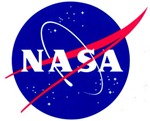 NASA has sent out a curious press release announcing that it will hold a news conference at 2 p.m. EST on Thursday, Dec. 2 – i.e. today - to discuss an astrobiology finding “that will impact the search for evidence of extraterrestrial life.” The news conference will be held at the NASA Headquarters auditorium at 300 E St. SW, in Washington and will be broadcast live on NASA Television and streamed on the agency's website at http://www.nasa.gov.
NASA has sent out a curious press release announcing that it will hold a news conference at 2 p.m. EST on Thursday, Dec. 2 – i.e. today - to discuss an astrobiology finding “that will impact the search for evidence of extraterrestrial life.” The news conference will be held at the NASA Headquarters auditorium at 300 E St. SW, in Washington and will be broadcast live on NASA Television and streamed on the agency's website at http://www.nasa.gov.
Astrobiology is the study of the origin, evolution, distribution, and future of life in the universe. Earth is the only known inhabited planet in the universe to date. However, advancements in the fields of astrobiology, observational astronomy and discovery of large varieties of extremophiles with extraordinary capability to thrive in the harshest environments on Earth, have led to speculation that life may possibly be thriving on many of the extraterrestrial bodies in the universe.
The report has piqued the curiosity of people across the web with speculations ranging from discovery of alien life in Titan by the Cassini space probe to probability of life in moon water. A Yahoo News reporter thinks that the announcement has “something to do with water, evolutionary biology, and aquatic bacteria.”
Kottke did a background research on the participating members and found:
1. Pamela Conrad (a geobiologist) was the primary author of a 2009 paper on geology and life on Mars
2. Felisa Wolfe-Simon (an oceanographer) has written extensively on photosynthesis using arsenic recently (she worked on the team mentioned in this article)
3. Steven Benner (a biologist) is on the "Titan Team" at the Jet Propulsion Laboratory; they're looking at Titan (Saturn's largest moon) as an early-Earth-like chemical environment. This is likely related to the Cassini mission.
4. James Elser (an ecologist) is involved with a NASA-funded astrobiology program called Follow the Elements, which emphasizes looking at the chemistry of environments where life evolves (and not just looking at water or carbon or oxygen).
Based on the expertise of the participants, Kotte believes that “they've discovered arsenic on Titan and maybe even detected chemical evidence of bacteria utilizing it for photosynthesis.”
[via Huffington Post]

Comments
Post a Comment